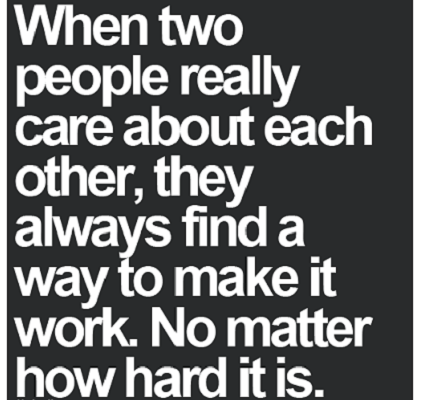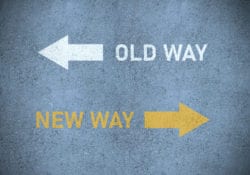Rule #1: You Can’t Work with No
I recently read an article about openness being a key indicator of success. I’m a fan of the Harvard Business Review (HBR) and the recent read made me go back and look at some of the HBR articles I’ve saved. I save HBR, Business Insider and other work-centered articles for the same reason I save and keep books. They comfort me, they reinforce the idea that others share and articulate my same beliefs. They remind me to read others’ work and to rest in the knowledge that I can learn from others, that we’re are all in this together and I don’t need to figure everything out myself.
In the HBR article about openness I saved, I highlighted this quote by William H. Peace:
“I believe that openness is a productive management technique and that intentional vulnerability is an effective management style.”
This highlight came from Peace’s article entitled “The Hard Work of Being a Soft Manager” which was published in the December 2001 Issue of the Harvard Business Review.
Another article I saved claims that openness is one of the “big 5” personality traits that can predict positive workplace outcomes. The article talks about conscientiousness, yet openness is mentioned in the same paragraph as one of the “big 5” important personality traits. I believe it is one of the most important disciplines of leadership. Here’s the highlight from that saved article. It’s an excerpt from a Business Insider Article written by Drake Baer on April 30th, 2014 that talks about personality traits that lead to success:
“Psychologists classify conscientiousness is one of the “Big 5” personality traits, with the others being agreeableness, extroversion, neuroticism, and openness to experience. The other traits can predict certain workplace outcomes — extroversion is a great fit for highly social gigs like sales and openness to experience often leads to creativity.”
I value openness. It’s a state of being that I continually strive to achieve. Open communicators listen more effectively. Open minds are ever in a state of discovery and learning. Leaders are learners. Open hearts show empathy when maybe things aren’t going so swimmingly on the job, and you need some genuine help. Open body language shows interest, and caring, and focused attention. These are things we all need, in spades, day in and day out.
As logic and reality would have it, the opposite of openness is a closed “fill in the blank.” Fill in the blank with a closed attitude, a closed mindset, a closed posture, a closed door. Things that are closed feel empty and cold. Closed things literally keep us separated from what’s on the other side. When I think of openness, I think of mechanical valves and water flowing. When I think of closed things, I think of the “ones and zeroes” of my technology education and background. If it’s closed, it’s generally “off.” It’s a zero.
This brings me to Strong Point’s First Rule of Leadership: “You Can’t Work with No.” I repeat this rule as often as I can to my colleagues and coworkers and even my friends and family. If Leadership is about working toward a shared future vision and creating the sphere of influence for others to feel excited to support your journey and follow your lead, then openness is the stance necessary for leadership success.
Another word for openness is willingness. When you’re working with people, and you want to add strength and power to your efforts, you have to have a way to weave wants, integrate talents and synthesize skills. We are better and stronger together, working as a unified force. If the other person or other team members are unwilling to follow-along or at least work with you, you’re not going anywhere. Certainly you’re not getting anywhere quickly or with a shared purpose.
In business, when you’re faced with “NO”, projects stall. Progress is delayed. Conversations begin to swirl into circular patterns and individual agendas pop-up like cylinders misfiring or notes out of tune. In a working relationship, “NO” means there’s no willingness to continue. There’s not a willingness to continue the conversation, to continue the joint effort or to even continue the thought or attitude to “let me try again.” A “No” from the other person means they are saying to you in mind, body or spirit that “You’re on your own. ” Here are a few examples of what “NO” sounds like:
- “This conversation is over and I don’t want to talk about it again.” (Mind you the current conversation often terminates without mutual consent)
- “I am not interested in pursuing this”
- “We’ve decided to move on.” (Your colleague is referring to another decision that’s been made without your knowledge and consent)
The recognizable “No” is not an effort to agree to disagree. You know when “No” means “NO.” Often times a verbal “NO” is also accompanied with a body language “NO.” Sometimes you get a full force “mind, body, spirit” “NO.” Crossed arms, eyes rolling or darting, facial expressions of frustration or disgust, shoulders turned away from you all say and reinforce the sentiment of “NO.”
The reason you cannot work with NO, is that working with someone literally requires a constant state of openness and willingness. People don’t work like mechanical valves. They’re not always timed and ready to be open or closed. They go back and forth with bumpy and messy stops-and-starts fraught with those pesky human feelings of fear, worry and self-doubt. We are constantly challenged by our own and others’ questions: “What happens if I’m wrong?” “What happens if we fail?” “How can I possibly get this done in time?” The waves of agreement and resistance flow through us as variably and as forcibly as the direction of the wind. Strong interpersonal relationships and Leadership requires a constant decision, on the part of the Leader, to overcome a self-centric and sometimes “closed” nature and to choose to remain open. When you’re faced with a co-worker who does not see eye-to-eye and shows concern about your approach to a challenge, remember that a Leader strives to reach mastery of openness. Ask the question: “What are you concerned about?” and “What could we do differently that will make you more comfortable in doing the work?” Practice Leaning In to learn more. Practice openness until you reach the point where it is part of your nature and part of your Leadership capability.
Closing off a conversation with a colleague and choosing not to “once-again” try to connect, means you’re not working together. You’re not relating. You’re not collaborating. You’re simply in the space of “NO.” Sometimes you’re not even talking. You’re definitely not innovating and thinking of creative ways to solve problems. Whether it’s you who are in the “No” or your colleague; you must keep trying and working to remain open. It’s a good question to ask: “How Long should I persist in my pursuit of openness?”
I once saw the Dalai Lama speak to a small crowd at Lehigh University. In the question and answer period of his talk, a participant asked, “When do you know when it’s time to give up on a relationship?” I remember him, this question, and his answer every time I think of openness. I liked the Dalai Lama’s answer. It was something to the effect: “Try once and rest awhile.” “Try again and see if your efforts to change things take hold.” “Let some more time elapse, and try a third time. “ If there’s no change, then simply Let it Go.” More times than not, you’re faced with a colleague who thinks, shows and speaks “NO.” In this case, you literally have to work around no. The Leadership preference is to work through “NO.”

Leadership is work. Working relationships require openness. In your efforts to Lead, work to maintain openness. Openness is a core discipline of Leadership. “You Can’t Work with No.”




